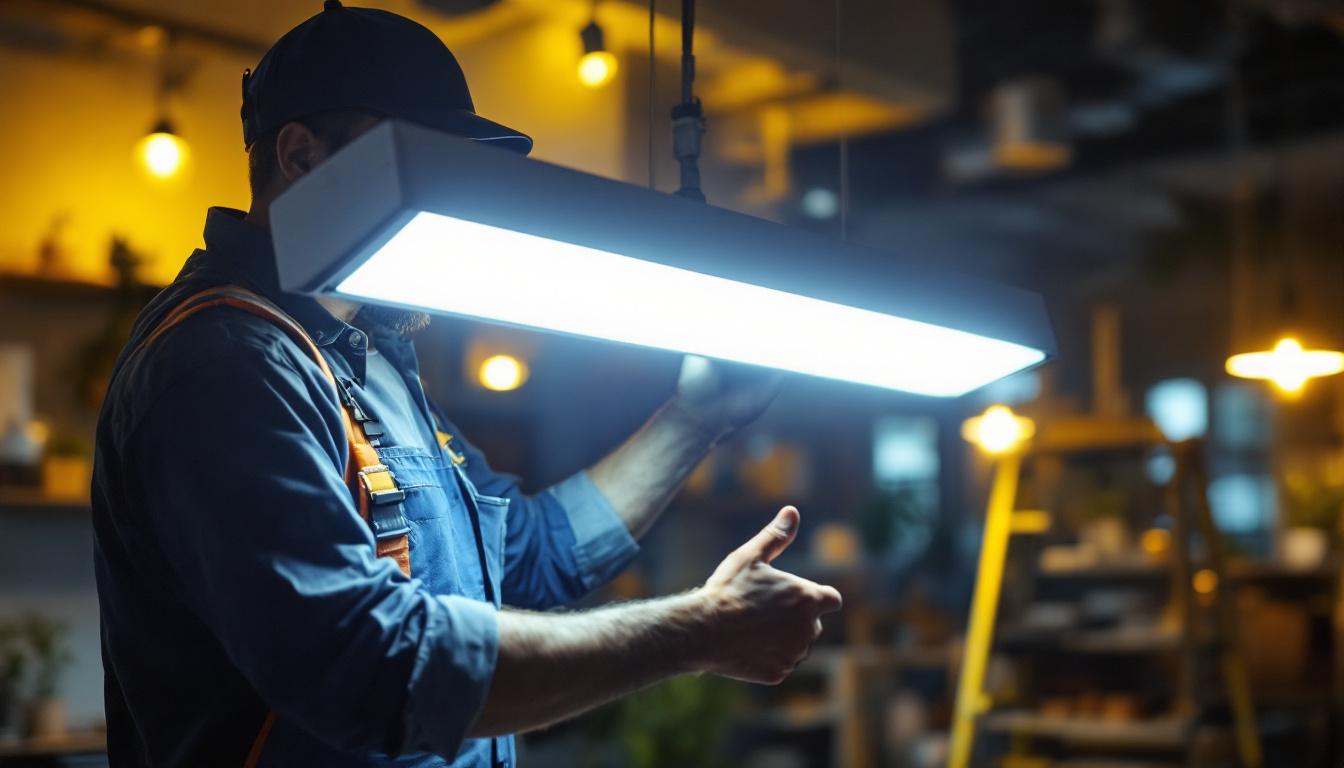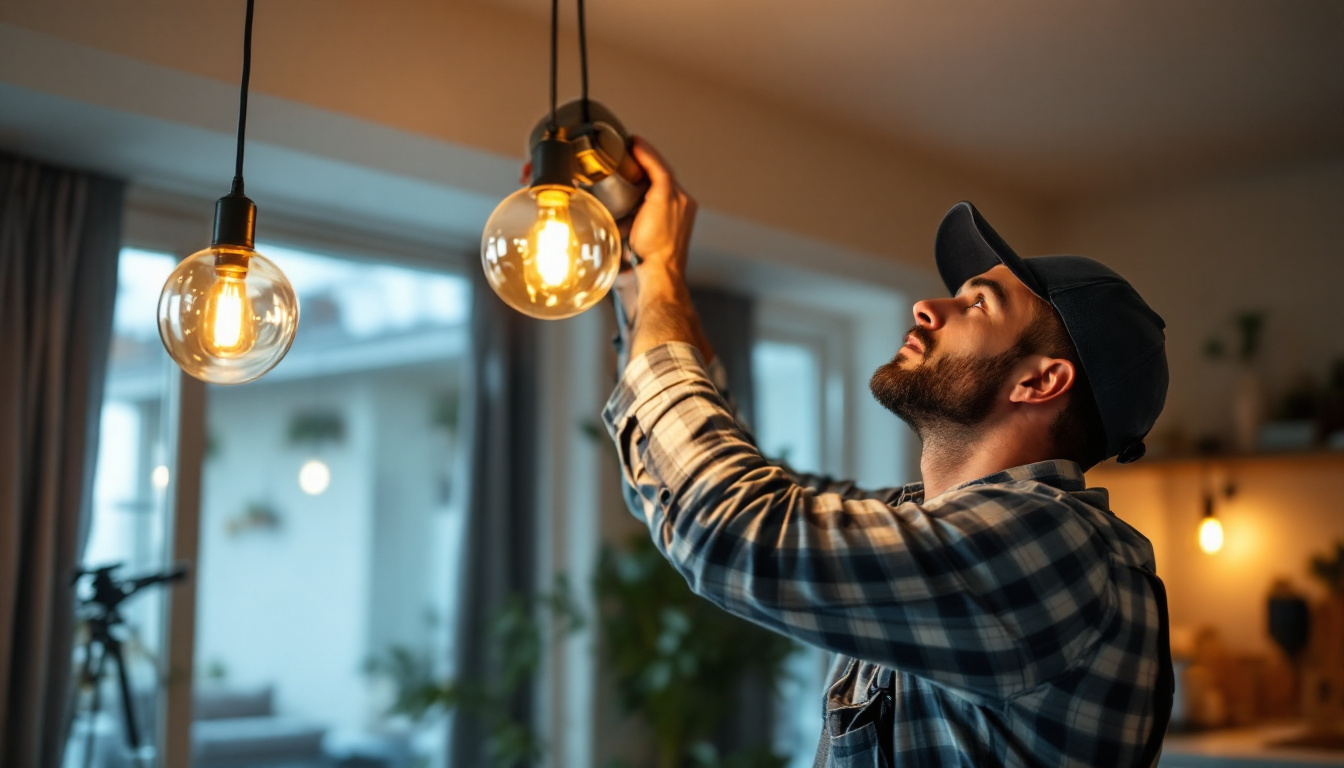
In the world of lighting design and installation, attention to detail is paramount. For lighting contractors, having a comprehensive checklist can streamline the process, ensuring that no critical steps are overlooked. This article presents an ultimate checklist tailored for lighting contractors, helping them navigate through their projects with ease and efficiency. From planning and design to installation and maintenance, every aspect is covered to ensure a successful outcome.
Before diving into any lighting project, it is essential to have a clear understanding of the project’s scope. This involves discussing the client’s needs, preferences, and budget. A well-defined scope sets the foundation for a successful project.
The first step in understanding the project scope is conducting a thorough client consultation. This meeting should cover the client’s vision, the intended use of the space, and any specific requirements they may have. Questions to consider include:
By gathering this information, lighting contractors can tailor their designs to meet the client’s expectations and ensure satisfaction. Additionally, it’s important to discuss the timeline for the project. Understanding deadlines can help prioritize tasks and manage resources effectively, ensuring that the project progresses smoothly and stays on schedule. Furthermore, discussing potential challenges or constraints upfront can lead to more innovative solutions and adjustments that align with the client’s vision.
After the initial consultation, a site assessment is crucial. This involves visiting the location to evaluate existing conditions, including natural light sources, architectural features, and any obstacles that may affect the lighting design.
During the site assessment, it is beneficial to take measurements and photographs. This documentation will serve as a reference throughout the project and help in creating an accurate lighting plan. It is also valuable to observe how the space is used at different times of the day, as this can influence the choice of lighting fixtures and their placement. For instance, a room that receives ample natural light during the day may require different artificial lighting solutions compared to a space that is consistently dim. Engaging with the occupants during this phase can provide insights into their daily routines and preferences, further refining the lighting design to enhance functionality and ambiance.
Once the project scope is understood, the next step is designing a comprehensive lighting plan. This plan should consider both functionality and aesthetics, ensuring that the lighting enhances the space while meeting the client’s needs. A successful lighting design can transform an ordinary room into a dynamic environment, influencing mood and productivity. Therefore, it is essential to engage with the client throughout the design process, discussing their preferences and any specific requirements they may have.
The selection of lighting fixtures is one of the most critical aspects of the design process. Contractors should consider various factors, including:
By carefully selecting fixtures, contractors can create a cohesive look that aligns with the overall design vision while also being mindful of energy consumption. Additionally, it’s worth exploring innovative technologies such as LED options that not only provide longevity but also offer a range of color temperatures to suit different settings. The right fixture can serve as a statement piece, drawing attention and adding character to the space.
The layout of the lighting plan is equally important. This involves determining the placement of fixtures to achieve optimal illumination. Key considerations include:
A well-thought-out layout not only enhances the functionality of the space but also contributes to the overall ambiance. For instance, in a living room, layered lighting can create a warm and inviting atmosphere, while in a workspace, focused task lighting can improve concentration and efficiency. Furthermore, incorporating adjustable fixtures can allow users to customize their lighting experience, adapting to different activities or moods throughout the day. This flexibility is increasingly important in modern design, where spaces are often multifunctional and require versatile lighting solutions.
Adhering to local building codes and regulations is a fundamental aspect of any lighting project. This ensures safety and compliance while also protecting the contractor from potential liabilities.
Each region has specific codes that govern electrical installations, including lighting. Contractors must familiarize themselves with these regulations to ensure compliance. This may involve:
By staying informed about local codes, contractors can avoid costly fines and ensure a smooth project execution.
In addition to local codes, safety standards must be prioritized. This includes using appropriate materials, ensuring proper installation techniques, and providing adequate training for all team members. Key safety considerations include:
By prioritizing safety, contractors can protect their team and clients while also enhancing their reputation in the industry.
The installation phase is where the planning and design come to life. A well-organized installation process can significantly impact the project’s success and client satisfaction.
Before the installation begins, it is essential to prepare the site and organize the necessary tools and materials. This includes:
A well-prepared team can work more efficiently, minimizing delays and ensuring a smooth installation process.
During the installation, it is crucial to follow best practices to ensure quality and safety. This includes:
By adhering to these techniques, contractors can deliver a high-quality installation that meets the client’s expectations.
After installation, a thorough evaluation is necessary to ensure everything is functioning as intended. This step is vital for identifying any issues that may need addressing.
Once the installation is complete, testing the lighting is essential. This involves checking each fixture to ensure it operates correctly and making any necessary adjustments. Key aspects to evaluate include:
By conducting a comprehensive evaluation, contractors can ensure that the lighting meets the client’s needs and expectations.
A client walkthrough is an excellent opportunity to demonstrate the completed project. During this walkthrough, contractors can explain the features of the lighting system, including:
This interaction not only enhances client satisfaction but also builds trust and fosters long-term relationships.
After the project is completed, ongoing maintenance and support are crucial for ensuring the longevity and performance of the lighting system.
Contractors should offer clients a maintenance plan that outlines regular checks and services. This plan may include:
By establishing a maintenance plan, contractors can help clients prolong the life of their lighting systems while also providing peace of mind.
Excellent customer support is vital for building a positive reputation. Contractors should be available to address any questions or concerns that may arise post-installation. This can include:
By prioritizing customer support, contractors can enhance client satisfaction and encourage repeat business.
The lighting industry is constantly evolving, with new technologies and trends emerging regularly. Staying informed about these changes is essential for contractors to remain competitive.
Investing in continuing education is a valuable way for contractors to stay updated. This can involve:
By expanding their knowledge, contractors can offer clients the latest solutions and innovations in lighting design.
Building a network of industry professionals can provide valuable insights and resources. Networking opportunities may include:
By connecting with others in the field, contractors can share experiences, learn from peers, and discover new opportunities for collaboration.
For lighting contractors, having a comprehensive checklist is essential for ensuring a successful project from start to finish. By following the steps outlined in this article, contractors can streamline their processes, enhance client satisfaction, and ultimately build a reputation for excellence in the lighting industry. From understanding the project scope to staying updated with the latest trends, each step plays a vital role in delivering high-quality lighting solutions.
By embracing these practices, lighting contractors can not only meet but exceed their clients’ expectations, paving the way for future success and growth in their business.
Ready to elevate your lighting projects with the best in the business? At LumenWholesale, we provide lighting contractors with the highest quality, spec-grade lighting products at prices that can’t be beaten. Say goodbye to local distributor markups and hello to our direct-to-contractor wholesale rates. Our extensive selection not only meets but exceeds industry standards, ensuring your projects shine with reliability and performance. Plus, with free shipping on bulk orders, you can stock up on premium lighting without the worry of hidden fees. Make your next project a beacon of success with LumenWholesale, where quality, affordability, and convenience come together seamlessly. Discover the difference and start saving today by visiting Wholesale Lighting at the Best Value.

Explore the transformative journey of digital timers for lights in the lighting industry.

Discover the ins and outs of 8-foot LED lights with our comprehensive guide tailored for lighting contractors.

Discover essential insights and expert tips in our comprehensive guide for lighting contractors.

Discover how LED lights revolutionize plant growth while offering lighting contractors significant savings in time and money.